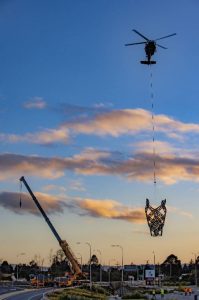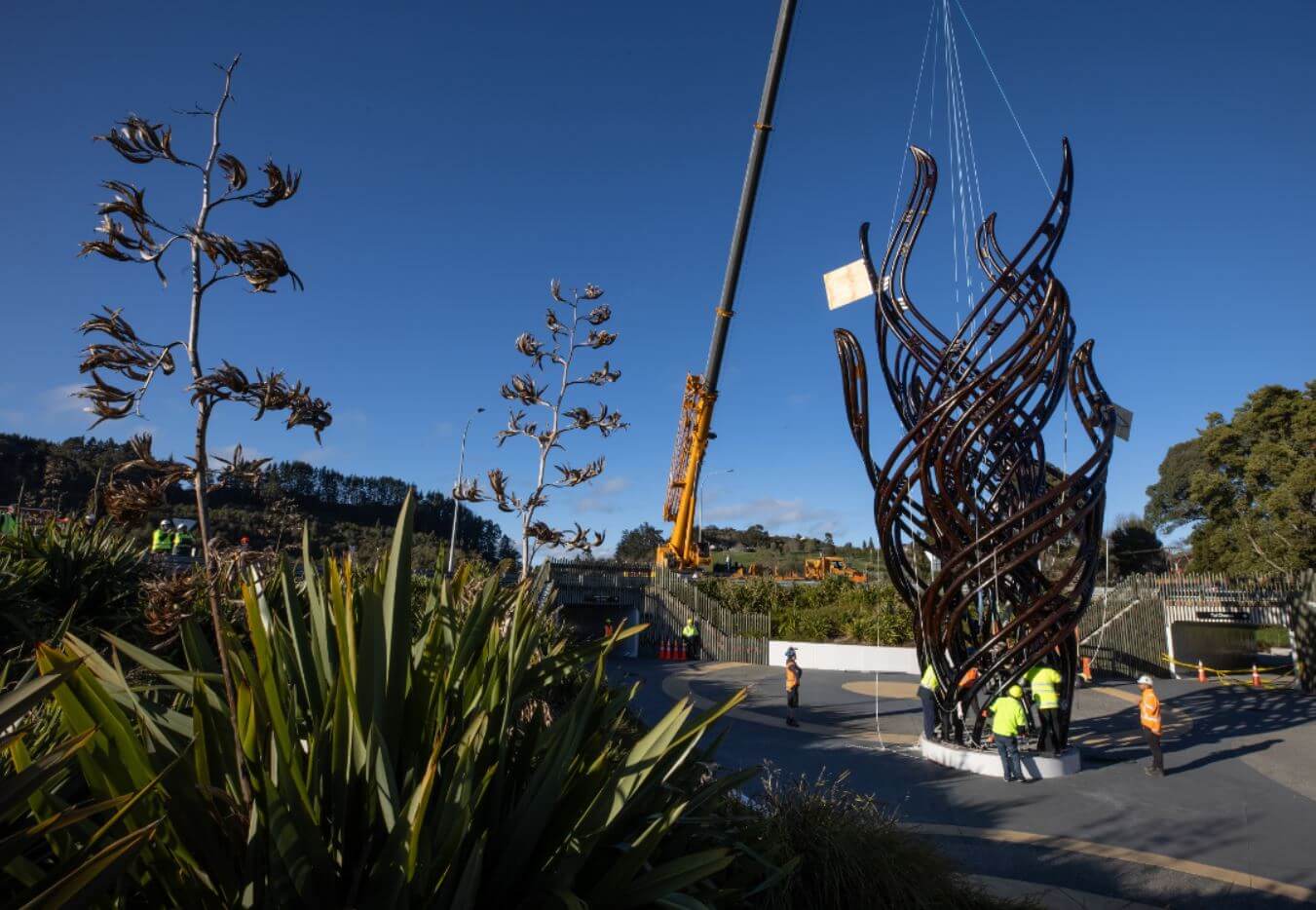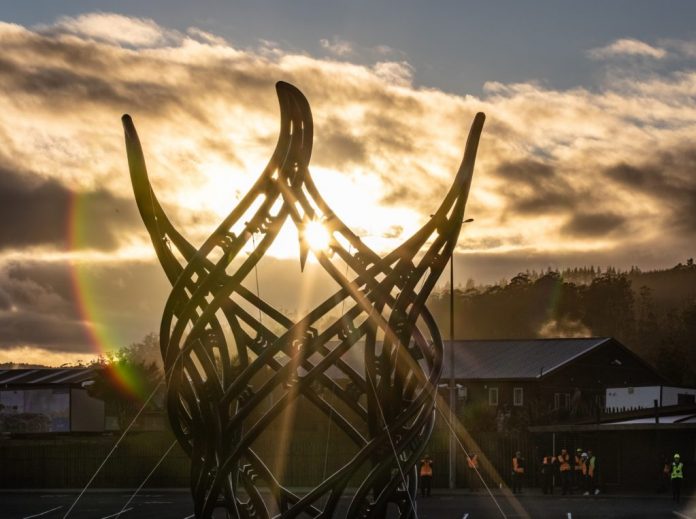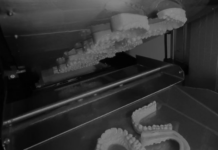At the heartland of New Zealand Māori culture, in a land home to many famous legends and stories, a recently installed 3D printed concentric sculpture reflects the rich Māori history and geothermal activity in the Taupo volcanic zone.
Three years after its original installation date, the Hemo Gorge Gateway Sculpture called Te Ahi Tupua was finally delivered into place on September 12, 2020, using a Black Hawk helicopter and a construction crane.

Considered the largest 3D printed sculpture in the world, Te Ahi Tupua is now displayed at the Te Puia carpark in the city of Rotorua, welcoming locals and visitors. At 12 meters high and weighing 3,429 kilograms, the creation was manufactured by local firm Kilwell Fibretube using 3D printing technology.
Craig Wilson, Kilwell Fibretube’s Chief Executive, said the 3D printing process required 1,700 pieces, took 17,300 hours to print on-site at Kilwell’s Rotorua factory, and used more than 252 kilometers of biodegradable thermoplastic. The company relied on several Raise3D printers to carry out the work and originally expected the machines to run 21 hours per day, seven days a week for 79 days. However, the final design had several delays.
The idea for a sculpture at the revamped Hemo Gorge roundabout in Rotorua was initially floated by the Rotorua Lakes Council in 2015, with a concept design from the New Zealand Māori Arts and Crafts Institute (NZMACI). Originally due to be installed in 2017 with a cost of NZ$500,000, the sculpture had been dogged by time delays and design problems. In fact, it became quite controversial as it is three years behind schedule with a budget overrun of more than NZ$240,000.

Source: Rotorua Daily Post
The local innovators at Kilwell Fibretube approached Rotorua Lakes Council after becoming aware of issues regarding the manufacture of the sculpture, which was intended to be made of stainless steel but became quite problematic. Thanks to 3D printing, the team was able to keep the original design by artist Stacy Gordine. Gordine is head of the National Stone and Bone Carving School at NZMACI and has over 25 years’ experience as a multimedia carver and adornment artist.

Source: Rotorua Public Art Trust
“The team had problems with only 3 to 4 percent of the parts printed,” said Wilson during a visit from Rotorua councilors in May of this year. “Sometimes the team got frustrated or a little bit depressed about it because it is taking so long but we just really want to see it finished. There are not too many people in the country who know how to do this work.”
As reported by Radio New Zealand, after two helicopter trips, both the inner and outer helix were safely and smoothly delivered to the roundabout. Now the team from Kilwell Fibretube will complete the final work to bolt the inner helix and connect the two helices. To keep it attached to the concrete plinth, the team made 96 base plates, and although the sculpture originally needed to withstand 135 km/h winds, it has now been built to resist winds of 175 km/h.

“Te Ahi Tupua is a truly ground-breaking piece of work, involving huge degrees of creativity from the outset and an extremely technical process in the following stages in order to bring it to life. It challenged the boundaries of what could be done, which is what makes it particularly special,” said NZMACI’s General Manager, Eraia Kiel. “It’s important we continue to tell Te Arawa stories in new and innovative ways. While Te Ahi Tupua describes the origins of geothermal activity in Rotorua through the story of Te Arawa tohunga Ngātoroirangi, it also tells other stories of our community – referencing concepts such as the interconnectedness of people, the pursuit of knowledge, and the importance of looking after our natural environment.”
In fact, the sculpture’s interlocking strands of rising heat and steam symbolically represent a local narrative that recants the indigenous world view of geothermal origins in the Taupo volcanic zone and the exploration journey by an ancestor of Te Arawa – the tribes based in the Rotorua and Bay of Plenty areas. According to legend, the great chief and priest Ngātoroirangi ascended the volcanic Mount Tongariro, where he almost perished from the intense cold, so he called upon his sisters to send heat and warmth. In their search for Ngātoroirangi, the supernatural deities of heat and fire, Te Pupu and Te Hoata created subterranean catacombs and the post-eruption surface features that left a geothermal imprint in the area.
The Rotorua Public Art Trust described a clear correlation between these traditions and the volcanic mountains and areas of surface geothermal activity, like the hot springs, geysers, mud pools, sinter terraces, and steam vents in Rotorua. Moreover, for the first time, this northern city will have a contemporary artwork that commemorates the subterranean journey of the deities and represents the connectedness of the communities that have made these special places their homes among geothermal fields and the post-eruption caldera’s within the Taupo volcanic zone.

















































